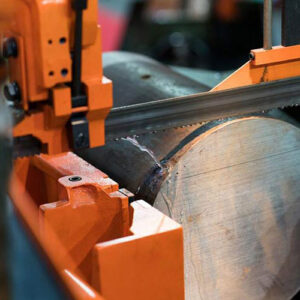Introduction
Welding is a cornerstone of modern manufacturing, allowing the fabrication of intricate structures and components. However, when it comes to welding hot work tool steel, a material renowned for its exceptional heat resistance and durability, unique challenges arise. In this comprehensive guide, we will delve into the complexities of welding hot work tool steel. We’ll explore the welding challenges encountered when working with this high-alloy steel, the reasons behind these challenges, and most importantly, the solutions and techniques that welders and engineers can employ to overcome them. From pre-weld preparation to post-weld heat treatment, this guide will equip you with the knowledge needed to master the art of welding hot work tool steel.
Understanding Hot Work Tool Steel<a name=”understanding-hot-work-tool-steel”
Hot work tool steel is a high-alloy steel renowned for its exceptional heat resistance, toughness, and wear resistance. It is commonly used in applications like die casting, forging, and extrusion, where it is exposed to extreme temperatures and mechanical stress.
Welding Challenges: Why Hot Work Tool Steel is Different<a name=”welding-challenges-different”
Welding hot work tool steel presents unique challenges due to its high alloy content and the need to preserve its properties, including heat resistance and wear resistance. These challenges include cracking, distortion, and the risk of damaging the steel’s microstructure.
Pre-Weld Preparation: Setting the Stage for Success<a name=”pre-weld-preparation-success”
Selecting the Right Filler Metal<a name=”selecting-right-filler-metal”
Choosing the correct filler metal is crucial for successful welding. It should have a composition compatible with hot work tool steel and provide the necessary mechanical properties and corrosion resistance.
Preheating: A Crucial Step<a name=”preheating-crucial-step”
Preheating the workpiece before welding helps reduce the temperature gradient and minimizes the risk of cracking. The preheat temperature depends on the steel grade and thickness.
Shielding Gas: Preserving the Weld Zone<a name=”shielding-gas-weld-zone”
Using the right shielding gas, such as argon or helium, is essential for preventing oxidation and contamination of the weld zone. It ensures a clean and strong weld.
Welding Techniques: Navigating the Challenges<a name=”welding-techniques-navigating-challenges”
TIG Welding: Precision and Control<a name=”tig-welding-precision-control”
Tungsten Inert Gas (TIG) welding offers excellent precision and control, making it suitable for welding hot work tool steel. It allows for a clean and precise weld bead.
MIG Welding: Efficiency and Speed<a name=”mig-welding-efficiency-speed”
Metal Inert Gas (MIG) welding is efficient and relatively faster than TIG welding. However, it requires proper shielding gas and settings to prevent weld defects.
**Submerged Arc Welding: Deep Penetration<a name=”submerged-arc-welding-deep-penetration”
Submerged Arc Welding (SAW) provides deep penetration, making it suitable for thicker sections of hot work tool steel. It requires specialized equipment and expertise.
Post-Weld Heat Treatment: Restoring Properties<a name=”post-weld-heat-treatment-restoring-properties”
Solution Annealing<a name=”solution-annealing”
Solution annealing involves heating the welded piece to a specific temperature and then cooling it slowly to restore the microstructure and properties of hot work tool steel.
**Tempering<a name=”tempering”
Tempering is a controlled heat treatment process that improves toughness and relieves internal stresses in the welded area. It is essential for maintaining the steel’s performance.
Quality Assurance: Inspecting Welds<a name=”quality-assurance-inspecting-welds”
Non-Destructive Testing<a name=”non-destructive-testing”
Non-destructive testing methods like radiography and ultrasonic testing are crucial for inspecting welds without compromising the integrity of the steel.
Challenges in Welding Hot Work Tool Steel<a name=”challenges-in-welding-hot-work-tool-steel”
Welding hot work tool steel is not without its challenges, including the risk of cracking, distortion, and the need for specialized techniques and equipment.
FAQ<a name=”faq”
1. Can hot work tool steel be welded without preheating?
Preheating is highly recommended when welding hot work tool steel to minimize the risk of cracking. The preheat temperature depends on the steel grade and thickness.
2. What type of filler metal is suitable for welding hot work tool steel?
Filler metals with compositions compatible with hot work tool steel and suitable mechanical properties and corrosion resistance are ideal.
3. Is post-weld heat treatment always necessary?
Post-weld heat treatment is often necessary to restore the properties of hot work tool steel after welding, especially if the steel has been exposed to high temperatures during welding.
4. Are there specific welding techniques for preventing cracking in hot work tool steel?
Techniques like TIG welding and proper preheating can help prevent cracking in hot work tool steel welding.
5. How can I ensure the quality of welded joints in hot work tool steel?
Non-destructive testing methods such as radiography and ultrasonic testing are essential for inspecting and ensuring the quality of welded joints.
Conclusion<a name=”conclusion”
Welding hot work tool steel is a complex endeavor that requires a deep understanding of the material’s unique properties and the challenges it presents. By carefully selecting the right filler metal, preheating as needed, and employing suitable welding techniques, welders can overcome these challenges and produce high-quality welds. Post-weld heat treatment and rigorous quality assurance measures further ensure that the welded components retain their essential properties, including heat resistance and toughness. With the knowledge and techniques outlined in this guide, welders and engineers can confidently tackle the welding challenges associated with hot work tool steel, ensuring the integrity and performance of their fabricated structures and components.

